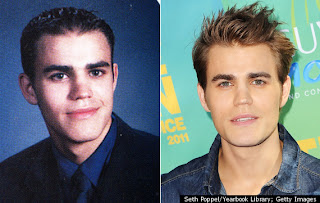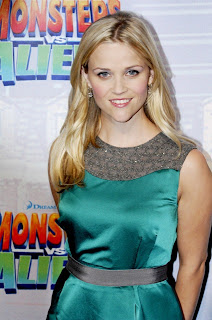Mary Quant Fashion Designer
 Mary Quant, 78, is a Welsh fashion designer and British fashion icon, who was instrumental in the 1960s mod fashion movement. Mary, who was born and grew up in England by Welsh parents, was one of the fashion designers who took credit for the miniskirt and hot pants, and by promoting these and other fun fashions she encouraged young people to dress to please themselves and to treat fashion as a game.
Mary Quant, 78, is a Welsh fashion designer and British fashion icon, who was instrumental in the 1960s mod fashion movement. Mary, who was born and grew up in England by Welsh parents, was one of the fashion designers who took credit for the miniskirt and hot pants, and by promoting these and other fun fashions she encouraged young people to dress to please themselves and to treat fashion as a game.
It has to be noted that Ernestine Carter, an authoritative and influential fashion journalist of the 1950s and 60s, wrote: "It is given to a fortunate few to be born at the right time, in the right place, with the right talents. In recent fashion there are three: Chanel, Dior, and Mary Quant".
In detail, Quant was born in Blackheath, southeast London, on 11 February 1934, the daughter of Welsh teachers. Her parents, Jack and Mary Quant, were both from mining families. They had been awarded scholarships to grammar school and had both attained first-class degrees at Cardiff University, before moving to London to work as schoolteachers. Quant went to Blackheath High School, then studied illustration at Goldsmiths College. After gaining a Diploma in Art Education from Goldsmiths, Quant started an apprenticeship at Erik, a high-end Mayfair milliner on Brook Street next door to the Claridge's hotel.
Quant met her future husband and business partner, Alexander Plunket Greene in 1953. They were married from 1957 until his passing in 1990 and had a son, Orlando.
In November 1955, Quant and Plunket Greene teamed up with a photographer and former solicitor, Archie McNair, to open Quant's first shop on the King's Road in London called Bazaar, above "Alexander's", a basement restaurant run by Plunket Green. In 1957, they opened the second branch of Bazaar, which was designed by Terence Conran.
Successful designs from this early period included small white plastic collars to brighten up sweaters and dresses, bright stockings in colors matched to her knitwear, men's cardigans made long enough to be worn as dresses, and a pair of "mad" lounging pyjamas made by Quant herself which were featured in Harper's Bazaar and purchased by an American manufacturer to copy. Following this, Quant made the decision to design and make more of the clothes she stocked, instead of purchasing in stock. Initially working solo, Quant was soon employing a handful of machinists, and by 1966 she was working with eighteen manufacturers concurrently.
The miniskirt, described as one of the defining fashions of the 1960s, is one of the garments most widely associated with Quant. Whilst she is often cited as the inventor of the style, this claim has been challenged by others. Marit Allen, a contemporary fashion journalist and editor of the influential "Young Ideas" pages for UK Vogue, firmly claimed that John Bates, rather than Quant or André Courrèges, was the original creator of the miniskirt. Others credit Courrèges with the invention of the style. However, skirts had been getting shorter since the 1950s - a development Mary Quant considered practical and liberating, allowing women the ability to run for a bus.
Quant later was quoted as saying: "It was the girls on the King's Road who invented the mini. I was making easy, youthful, simple clothes, in which you could move, in which you could run and jump and we would make them the length the customer wanted. I wore them very short and the customers would say: "Shorter, shorter."" She gave the miniskirt its name, naming it after her favorite make of car, the Mini.
In addition to the miniskirt, Mary Quant is often credited with inventing the coloured and patterned tights that tended to accompany the garment, although their creation is also attributed to the Spanish couturier Cristobal Balenciaga who offered harlequin-patterned tights in 1962 or to John Bates.
In the late 1960s, Quant popularized hot pants, becoming a British fashion icon. Through the 1970s and 1980s she concentrated on household goods and make-up, rather than just her clothing lines, including the duvet which she claims to have invented.
Quant is also a Fellow of the Chartered Society of Designers and winner of the Minerva Medal, the Society's highest award.
In 2000, Quant resigned as director of Mary Quant Ltd., her cosmetics company, after a Japanese buy-out.There are over 200 Mary Quant Color shops in Japan, where Quant fashions continue to enjoy more popularity.
In 1963 Quant was the first winner of the "Dress of the Year" award.
In 1966 she was appointed OBE for her outstanding contribution to the fashion industry. Quant arrived at Buckingham Palace to accept the award in a cream wool jersey minidress with blue facings.
In 1990 Quant won the "Hall of Fame Award" of the British Fashion Council.
Source: Wikipedia









Nice Designing
ReplyDeleteHI,
ReplyDeleteDoes anyone know where I can find an image online of a Mary Quant sixties dress?
I am doing an Art project about "Movement" and right now am doing about optical art. I have heard that Mary Quant used op art in her clothes and I thought I could do a page on her designs, however, I can't find any images of her actual designs.
Thanks;
New Fashion Trends